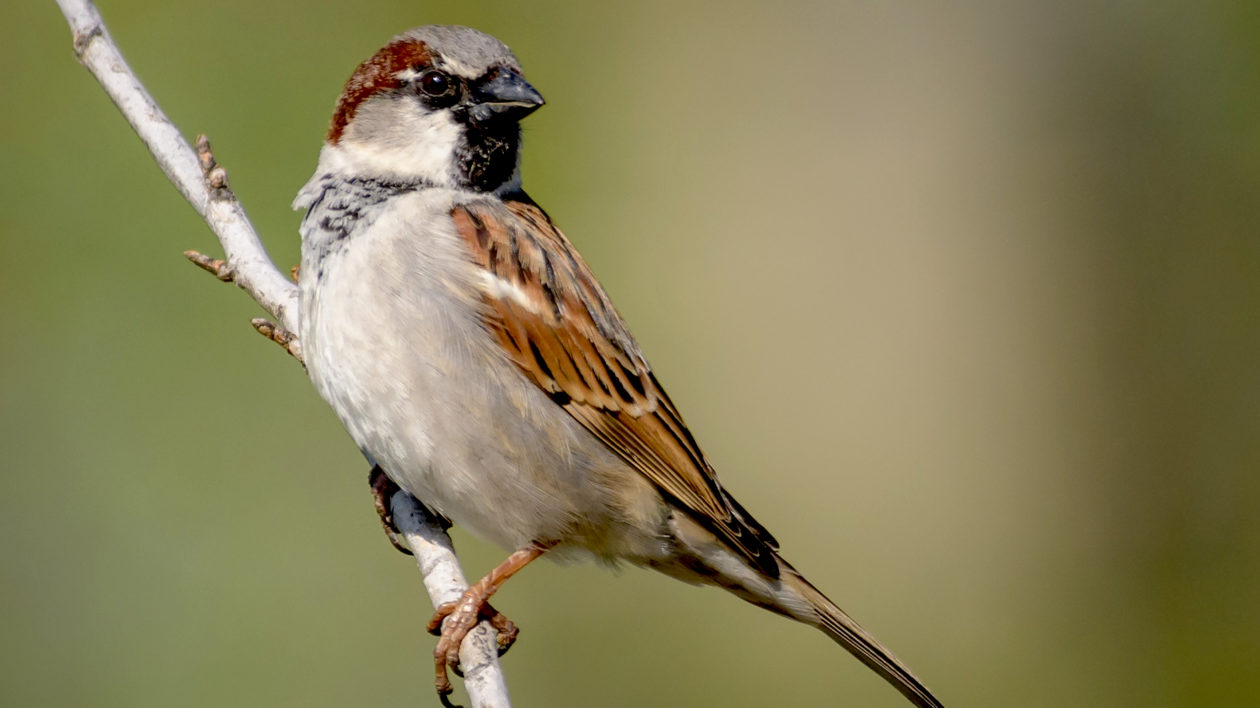Introduction

An apex predator, also known as an alpha predator or top predator, occupies the highest trophic level in a food chain or ecological pyramid. It plays a crucial role in maintaining ecological balance within an ecosystem by regulating population sizes and shaping habitats.
Adaptation refers to the process through which organisms develop traits that enable them to survive and thrive in their environment. These adaptations can be structural, physiological, or behavioral and are shaped by natural selection. Over time, advantageous traits are passed on to future generations.
Birds exhibit a wide range of adaptations that have enabled them to thrive in different environments. These adaptations include beak shape and size, wing morphology, coloration, and behaviors such as migration and nesting habits.
In the context of an apex bird, a long beak provides numerous advantages for survival and success as a predator. By exploring the benefits and reasons behind the evolution of long beaks in birds, we can gain insights into their adaptability and specialization.
What is a Long Beak?

A long beak is an elongated structure found in certain bird species. It varies in shape and size, ranging from slender and needle-like to curved and sturdy. The beak is composed of keratin, a lightweight yet durable material that covers the bony structure of the bird’s upper and lower jaws.
Description of a Long Beak
A long beak is a remarkable feature that distinguishes certain bird species. It extends from the bird’s face, serving various purposes based on its shape and size. The beak’s structure is composed of keratin, providing strength and flexibility.
The shape and size of a bird’s beak are closely related to its feeding habits and ecological niche. For instance, hummingbirds possess long, slender beaks adapted for reaching into tubular flowers to extract nectar. Toucans have large, colorful beaks used for feeding on fruits and reaching inaccessible branches.
Examples of Birds with Long Beaks
-
Hummingbirds: Renowned for their ability to hover and extract nectar from flowers. Their long, slender beaks allow them to access hidden nectar.
-
Toucans: Known for their large, colorful beaks that are lightweight and used for fruit feeding and reaching inaccessible branches. Their beaks also serve social and thermoregulation purposes.
-
Herons and Egrets: Elegant wading birds with long, pointed beaks used for catching fish and small aquatic creatures. Their beaks act as spears, facilitating efficient hunting.
These diverse examples of birds with long beaks demonstrate the remarkable adaptations that enable them to thrive in their specific ecological niches.
The Benefits of a Long Beak in Birds

A long beak is a remarkable adaptation that has allowed birds to thrive in diverse environments and gain a competitive edge in foraging. Let’s delve into the advantages conferred by this specialized trait.
Adaptation for Accessing Food Sources

The evolution of a long beak in birds has enabled them to exploit various ecological niches and access food resources that would otherwise be out of reach. This adaptation provides significant advantages in foraging.
Advantages of a Long Beak
-
Accessing Hidden Food Sources: Birds with long beaks can reach deep into flowers or narrow crevices, extracting nectar, pollen, or insects that are inaccessible to other species. This specialized feeding technique ensures a consistent and specialized food supply.
-
Capturing Elusive Prey: Long-beaked birds excel at capturing concealed or elusive prey. Their extended beaks allow them to reach into the ground or water, catching worms, fish, or crustaceans. This hunting advantage secures vital food resources.
-
Specialized Feeding Behaviors: Different bird species with long beaks exhibit specific feeding behaviors and diets. Hummingbirds, for instance, possess long, slender beaks ideal for sipping nectar from flowers. Shorebirds have long, thin beaks enabling them to probe deep into sand or mud to find invertebrates. These specialized strategies reduce competition and exploit unique food sources.
-
Competitive Advantage: In resource-scarce environments, birds with long beaks gain a distinct advantage. Their extended beaks allow them to access limited food resources more efficiently, increasing their chances of survival and reproductive success.
-
Tool Manipulation: Besides foraging, a long beak serves as a versatile tool for manipulating objects in the environment. Some bird species use their beaks to extract seeds from fruits or break open hard shells to access nutritious contents. This adaptability broadens their range of food resources.
-
Courtship and Mating: Long beaks may play a role in courtship displays and mating rituals. They can be used for visual displays or specialized behaviors that attract mates and establish breeding territories. The length and shape of the beak may serve as an indicator of genetic fitness and compatibility, influencing mate selection and reproductive success.
In conclusion, a long beak in birds is an extraordinary adaptation that provides numerous benefits. It allows birds to access hidden food sources, capture elusive prey, engage in specialized feeding behaviors, gain a competitive advantage in resource-scarce environments, manipulate objects in the environment, and play a role in courtship and mating rituals. The evolution of a long beak has enabled avian species to thrive and excel in their respective ecological niches.
Different Reasons for Long Beaks in Birds

Birds with long beaks have evolved to access a variety of food sources, showcasing their versatility and adaptability.
Types of Food Accessed by Birds with Long Beaks
Nectar
Long, slender beaks like those of hummingbirds allow them to reach deep into flowers and extract energy-rich nectar, making them important pollinators.
Insects
Birds with long beaks, such as ibis, use their extended beaks to probe into soil, mud, or shallow water, capturing hidden insects and small invertebrates.
Fish
Herons and kingfishers possess long, sharp beaks designed for catching fish, enabling quick and precise movements in water.
Seeds and Fruits
Birds like finches and toucans with long, sturdy beaks rely on cracking tough seeds or accessing fruits, allowing them to thrive in environments abundant with these resources.
How Long Beaks Help Birds Compete for Food

Resource Partitioning
Bird species with distinctive beak lengths and shapes can specialize in feeding on specific types of food, reducing competition and promoting coexistence.
Accessing Hidden Food Sources
Long beaks enable birds to access concealed or hard-to-reach food sources, providing a competitive advantage in resource-limited environments.
In conclusion, birds with long beaks have evolved specialized tools to access a wide range of food sources, promoting their survival and reducing competition. Understanding the different reasons for long beaks highlights the adaptability and diversity of avian species.
Advantages of a Long Beak for Bird Apex Predators

A long beak provides significant advantages for bird apex predators, enhancing their survival and hunting capabilities.
Enhanced Reach
An apex bird’s long beak allows access to narrow crevices and hard-to-reach areas, uncovering concealed prey that other birds may miss.
Specialized Feeding

Different beak shapes and sizes enable apex birds to efficiently exploit their preferred food sources, maximizing their chances of successful predation.
Efficient Prey Capture
The length and shape of a long beak enable swift and precise strikes, increasing an apex bird’s success in capturing agile or evasive prey.
Resource Competition
A long beak grants apex birds access to a wider range of potential food sources, increasing their resilience and survival prospects in challenging environments.
Overall, a long beak confers multiple advantages upon bird apex predators, enabling them to thrive in their ecological niche and contribute to the diversity of avian predators.
Conclusion


The long beak of bird apex predators is a vital adaptation that enhances their ability to survive and thrive. Its advantages include enhanced reach, specialized feeding capabilities, efficient prey capture, and an advantage in resource competition. Understanding the significance of the long beak sheds light on the remarkable diversity and effectiveness of these avian predators.
Conclusion
Throughout this article, we have explored the fascinating concept of adaptation in birds, particularly focusing on the significance of a long beak as an adaptation for a bird apex. Let us now summarize the key points discussed and delve into our final thoughts on this topic.
Summary of the Discussion
In the introduction, we defined an “apex” as the top predator or dominant species within a given ecosystem. We also established the broader context of adaptation, which refers to the evolutionary process that allows organisms to adjust to their environment and enhance their chances of survival.
Moving on, we explored the characteristics and examples of birds with long beaks. We discovered that a long beak is a versatile tool that enables birds to engage in various survival tasks such as accessing nectar, probing for insects, catching fish, and extracting seeds. Different bird species exhibit specialized beak adaptations to suit their specific feeding strategies.
We then investigated the benefits of a long beak as an adaptation. By possessing a long beak, birds gain advantages in terms of precision, efficiency, and access to different food sources. The length of their beaks allows them to exploit specific ecological niches, reducing direct competition and enhancing their chances of survival.
Final Thoughts on Why a Long Beak is an Adaptation for a Bird Apex
The adaptation of a long beak in bird apexes serves as a crucial survival advantage. Firstly, it enables apex birds to specialize in particular feeding strategies, effectively utilizing specific food sources that might be inaccessible to other species. This minimizes direct competition and allows apex birds to carve out their ecological niches.
Secondly, the long beak provides a versatile tool for apex birds, allowing them to exploit a wide range of food resources. Whether it is reaching deep into flowers for nectar, extracting insects from tree bark, or seizing prey from water, the long beak enhances their hunting efficiency and increases their chances of obtaining sustenance.
Moreover, the long beak plays a significant role in resource competition. Apex birds face intense competition within their habitats, and the ability to access otherwise unreachable food sources gives them a competitive edge. By occupying distinct ecological niches, apex birds can coexist with other species, reducing direct competition and ensuring their survival.
In conclusion, the adaptation of a long beak in bird apexes is a remarkable evolutionary trait that contributes to their success as top predators or dominant species. The versatility, specialized feeding strategies, and competitive advantages provided by a long beak enable apex birds to thrive in diverse environments. Understanding this adaptation sheds light on the intricate dynamics of ecosystems and highlights the remarkable ways in which organisms adapt to their surroundings for survival and prosperity.
As we continue to explore the wonders of the natural world, the adaptations exhibited by apex birds and their long beaks serve as a testament to the incredible diversity and ingenuity of life on our planet.
Frequently Asked Questions
1. What is the most likely reason that a long beak would be an adaptation for a bird apex?

A long beak is an adaptation for a bird apex because it provides several advantages for survival and hunting. It enhances reach, allowing apex birds to access narrow crevices and uncover concealed prey. It also enables specialized feeding, as different beak shapes and sizes allow apex birds to efficiently exploit their preferred food sources. Additionally, a long beak facilitates efficient prey capture by enabling swift and precise strikes. Lastly, it grants apex birds access to a wider range of potential food sources, increasing their resilience and survival prospects in challenging environments.
2. How does a long beak enhance the hunting capabilities of bird apex predators?

A long beak enhances the hunting capabilities of bird apex predators in several ways. It allows for enhanced reach, enabling apex birds to access hidden or hard-to-reach areas and uncover concealed prey that other birds may miss. The length and shape of a long beak enable swift and precise strikes, increasing an apex bird’s success in capturing agile or evasive prey. Additionally, the specialization of beak shape and size allows apex birds to efficiently exploit their preferred food sources, maximizing their chances of successful predation.
3. What advantages does a long beak provide for bird apex predators in resource competition?

A long beak provides bird apex predators with advantages in resource competition. It grants them access to a wider range of potential food sources, increasing their resilience and survival prospects in challenging environments. By occupying distinct ecological niches, apex birds can coexist with other species, reducing direct competition. The ability to access otherwise unreachable food sources gives them a competitive edge, as they can exploit specific resources that might be inaccessible to other species. This enhances their chances of obtaining sustenance and contributes to their success as top predators or dominant species.
4. How does a long beak allow bird apex predators to specialize in their feeding strategies?
A long be

Leave a Reply